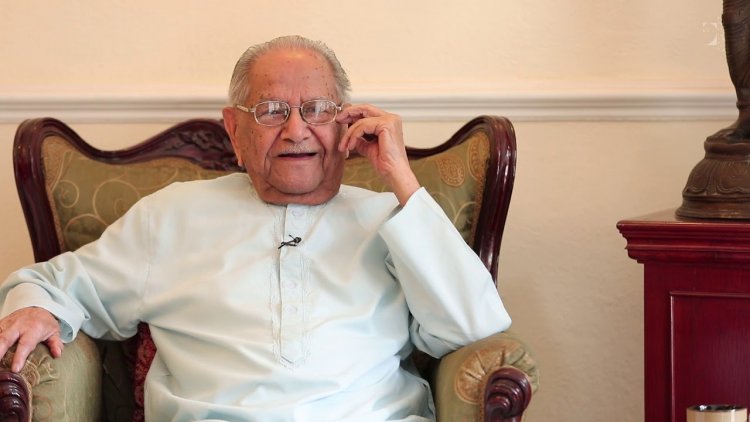Famous Archaeologist B.B. Lal turns 99!

Padma Bhushan Awardee, Indian archaeologist Braj Basi Lal, better known as B. B. Lal (Born on 2nd May, 1921) turns 99 today! At this age when most people are living retired lives, Professor Lal does research and writing.
Prof. B. B. Lal was conferred upon Padma Bhushan in the year of 2000. He was the Director General of the Archaeological Survey of India (ASI) from 1968 to 1972 and has served as Director of the Indian Institute of Advanced Studies, Shimla. Prof Lal also served various UNESCO committees. In a career spanning over five decades, Prof Lal made immense contribution to the field of archaeology.
Apart from releasing over 150 research articles and 20 books, Prof. Lal excavated several important landmark sites including Hastinapura (U.P.), Sisupalgarh (Orissa), Purana Qila (Delhi), Kalibangan (Rajasthan). From 1975-76 onwards, Prof. Lal investigated sites like Ayodhya, Bharadvaja Ashrama, Sringaverapura, Nandigrama and Chitrakoota under the Archaeology of Ramayana Sites.
Archaeologists like B.B. Lal (he conducted the Hastinapur excavations in 1950) always wanted to examine Hindu epics as reliable sources to offer a scientific perspective to them. He came to be regarded as the ‘pro-Hindutva archaeologist’ in the 1990s. Although earlier in 1970s, he did not show any interest in determining the birthplace of Lord Ram in Ayodhya.
In his later writings, the search for a ‘temple beneath the mosque’ became B. B. Lal’s primary consideration. He began to focus on the disputed site of Babri Masjid and the adjacent areas. On the basis of his excavations, Lal produced a ‘Pillar based theory’. He claimed to identify pillars of a temples, which would have been used to provide a material foundation to the Babri Masjid. In one of his books, he addresses this issue;
"Attached to the piers of the Babri Masjid, there were twelve stone pillars, which carried not only typical Hindu motifs and mouldings, but also figures of Hindu deities. It was self-evident that these pillars were not an integral part of the Masjid, but were foreign to it."

Professor B.B. Lal has created a legacy of his own in the field of Archaeology. In fact, The British archaeologists Stuart Piggott and D.H. Gordon describe ‘Copper Hoards of the Gangetic Basin’ and the ‘Hastinapura Excavation Report’; two of Lal's works published in the Journal of the Archaeological Survey of India, as models of research and excavation reporting.
Presently, Lal continues to live in Delhi. His son Vrajesh Lal is a businessman based in the United States.

Professor Lal’s archaeological contributions has been monumental and has paved a long way for excavational works in India’s mythological sites. Is there any truth in our ancient mythological scriptures? Did the events really take place? He just had to say:
“However, sceptics insist that Mahabharat is nothing more than a figment of someone’s imagination. All the sites associated with the mythological epic continue to have the same nomenclature even till this day.”
Thank you for all colossal gifts that you have bestowed upon the future of Archaeology. We wish you a very Happy Birthday!















































